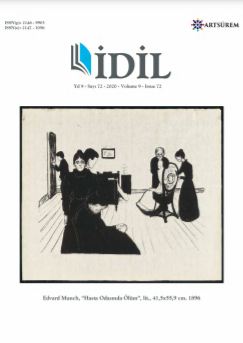KÜLLÜD- DURUB, KÜLLÜ’N- NAĞAM, KÜLLÜ’N- NAĞAM VE’D- DURUB MÛSIKÎ FORMLARININ MÜZİKOLOJİK AÇIDAN DEĞERLENDİRİLMESİ
KULLU-D- DURUB, KULLU’N- NAGAM , KULLU’N- NAGAM VE’D- DURUB MUSICOLOGIAL EVALUATION OF THE MUSIC FORMS
Author(s): Gamze KöprülüSubject(s): Fine Arts / Performing Arts, Music, Cultural Anthropology / Ethnology
Published by: Sanat ve Dil Araştırmaları Enstitüsü
Keywords: Kullud- durub; kullu’n-nagam; kullu’n-nağam ve’d- durub; music forms; musicology;
Summary/Abstract: Musical forms in Turkish music edwares give us important clues in terms of reflecting the musical culture of the period. It is possible to see many other musical forms such as Nevbet-ı muretteb, gazel, amel, pışrev, savt and nakış in their music manuscript. Some forms of music have survived to the present day, while some have undergone both name and structural changes, while others have completely lost their existence. It is aimed to reveal whether the three musical forms such as küld- durub, kül’n-nağam and kül nn-nagam and ’d-durub, which exist in the manuscripts, exist today and have undergone changes. In the qualitative study, retrospective research model was used together with literature review. The forms include twelve makams such as uşşak, rast, hüseyni, hicazi, and makams and procedural findings that vary according to forms such as remel-i asl, hafif, sakil-i evvel. At the same time, some conclusions have been reached such that some of these three forms of music have not survived to the present day, and some of them have experienced interactions with different dynamics performed today and are the basis for the form of kar-ı natık and saz semai by its structure.
Journal: İdil Sanat ve Dil Dergisi
- Issue Year: 9/2020
- Issue No: 72
- Page Range: 1270-1279
- Page Count: 10
- Language: Turkish

